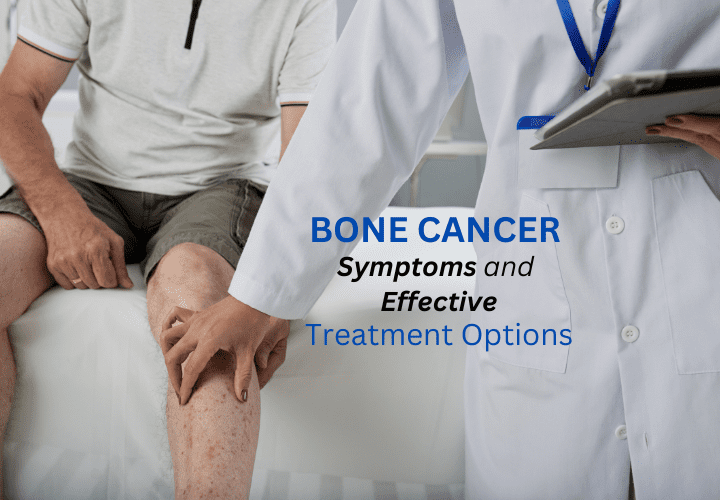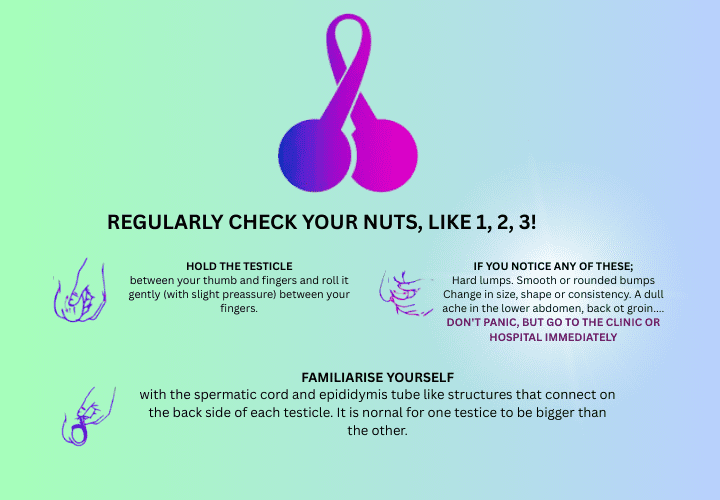Bone Cancer Symptoms and Effective Treatment Options

Bone Cancer Symptoms and Effective Treatment Options
- onco
- July 18, 2023
July is Bone Cancer Awareness Month! During July, we join hands to raise awareness, support research, and inspire hope for bone cancer survivors. So, let’s work together to raise awareness of this illness, inform others, and work towards a time when no one will have to battle bone cancer alone. Bone cancer is a relatively uncommon type of cancer that manifests inside the bones. Although it can affect any bone in the body, the long bones of the arms and legs are most frequently affected. As the signs of this type of cancer might match those of other disorders, it can be challenging to identify it early. For prompt intervention and better results, it is essential to understand the symptoms and signs of bone cancer and the various bone cancer treatments. Here in this blog, we will go through the signs and symptoms of bone cancer and practical cures.
Knowledge of Bone Cancer:
Primary and secondary bone cancer are the two basic types into which bone cancer can be divided. While secondary bone cancer, sometimes called metastatic bone cancer, spreads to the bone from other body regions, including the breast, lung, or prostate, primary bone cancer begins within the bone itself.
Depending on the location, stage, and kind of disease, the symptoms of bone cancer can change. Bone cancer may not exhibit any signs in its early stages. However, the following symptoms could appear when the tumour enlarges:
- Pain: Pain is one of the most common signs of bone cancer is persistent, localized bone pain that is worse at night or after exercise. Although the pain may begin as being sporadic, it eventually becomes consistent as the tumour grows.
- Lumps and Swelling: The affected area may experience obvious lumps or swelling and the lump could be warm and painful to the touch.
- Bone Fractures: Cancer-related bone weakness increases the chance of fractures, even from minor trauma.
- Fatigue and Weight Loss: As with the majority of cancers, bone cancer can result in weariness and accidental weight loss.
- Motion Restriction: If a tumour is close to a joint, it may limit motion and create stiffness.
Options for Effective Treatment:
The method of treating bone cancer depends on a number of variables, including the disease’s type, stage, and location, as well as the patient’s general condition. For treating cancer, a multidisciplinary team of oncologists, orthopaedic surgeons, radiation oncologists, and other medical specialists usually works together to create a customized treatment plan. The following are some of the most typical bone cancer treatments:
- Surgery: Surgery is an essential component in treating bone cancer. The main objective is to remove the malignant tumour and any nearby tissues that have been harmed while maintaining the limb’s integrity and functionality. Amputation may occasionally be required if the tumour is substantial or the nearby nerves and blood vessels are harmed.
- Radiation therapy: Radiation therapy uses high-energy beams to shrink tumours and kill cancer cells. It is frequently used either before surgery to reduce the tumour or after to eradicate any cancer cells that may have persisted. Additionally, radiation therapy might lessen discomfort and enhance the general quality of life.
- Chemotherapy: It is the method of eliminating cancer cells from the body’s tissues by applying drugs. It can be used either before surgery to reduce the tumour or after to get rid of any cancer cells that might have survived. In cases of advanced or metastatic bone cancer, chemotherapy is also applied.
- Targeted Therapy: Therapy that directly targets cancer cells while sparing healthy cells is known as ‘targeted therapy’. Osteosarcoma and Ewing sarcoma are two examples of bone cancers that may respond well to this treatment method.
- Immunotherapy: Immunotherapy strengthens the immune system’s capacity to identify and combat cancer cells in the body. Immunotherapy is a promising treatment option for bone cancer, even if research is still in its early phases. Also, it can be combined with other strategies for better treatment.
In conclusion, excellent treatment outcomes depend on the early identification of bone cancer. You must get medical advice right away if you have chronic bone pain, swelling, or any other unsettling signs. Combinations of surgery, radiation therapy, chemotherapy, targeted therapy, and cutting-edge immunotherapy are frequently used to treat bone cancer. An individual’s ability to actively participate in their healthcare and increase the likelihood of a positive prognosis depends on how well-informed they are about the symptoms and available treatments. If you or your loved ones are suffering from bone cancer and want to fight against it, you should consult Oncoplus, the best hospital for bone cancer treatment. We take great satisfaction in being the greatest hospital for treating patients worldwide and battling this difficult illness. We provide individualized and comprehensive care that raises the bar for cancer thanks to state-of-the-art equipment and a team of recognized doctors. We can diagnose, treat, and monitor bone cancer with unmatched precision because our cutting-edge facilities give patients the best possible chance of recovery. Oncoplus walks you through every step of your recovery journey by fusing ground-breaking science with caring support. You may rely on us to provide unmatched knowledge and a better future.
Recent Posts
-
Can Testicular Cancer affect fertility?
April 23, 2025
-
Why are Breast Cancer Cases Increasing Around the World?
April 17, 2025





Leave a Reply